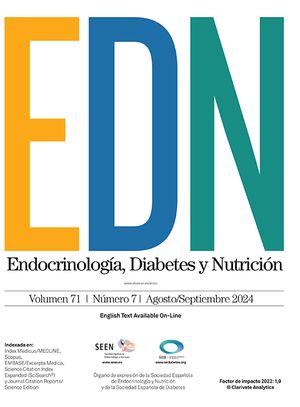La hiponatremia es la alteración electrolítica más frecuente que existe. En la inmensa mayoría de los casos se produce una retención de agua debida a una incapacidad del sujeto para equilibrar la excreción con la ingestión de líquido. Se proporcionan aspectos básicos acerca de la fisiopatología y la epidemiología de la hiponatremia en algunos contextos, como el entorno ambulatorio y el hospitalario, la población anciana, la hiponatremia asociada a fármacos y al ejercicio, o la que se observa en enfermedades frecuentes, como la insuficiencia cardíaca, la cirrosis hepática, la neumonía y la infección por el virus de la inmunodeficiencia humana.
Para el diagnóstico diferencial de la hiponatremia se debe tener en cuenta la osmolalidad plasmática: elevada, normal o baja. En este último caso, es donde se encuadran las verdaderas hiponatremias que con mayor frecuencia se encuentran en la práctica clínica. Si el volumen extracelular está disminuido, nos podemos encontrar ante situaciones con concentraciones urinarias de sodio bajas, en las que hay una deshidratación del paciente, o normales, en las que predomina una retención de agua. En la hiponatremia con volumen extracelular normal se produce una retención anormal de agua libre por diferentes estímulos. Es típico de pacientes hospitalizados, caso del hipotiroidismo y del síndrome de secreción inadecuada de hormona antidiurética.
La hiponatremia está infradiagnosticada y, lo que es peor, infratratada a pesar de que son numerosas las investigaciones que han demostrado que sus repercusiones sobre el ingreso hospitalario son devastadoras. Los parámetros de laboratorio de mayor utilidad en su diagnóstico son la concentración urinaria de sodio, la osmolalidad plasmática y la osmolalidad urinaria.
Hyponatremia is the most common electrolyte disturbance. This disorder is usually produced by water retention due to the patient's inability to balance water excretion with ingestion of liquids. The present article provides basic information on the physiopathology and epidemiology of hyponatremia in certain contexts such as the ambulatory and hospitalized settings, the geriatric population, exercise-induced hyponatremia, drug-induced hyponatremia and finally hyponatremia observed in some common diseases such as heart failure, liver cirrhosis, pneumonia and HIV infection.
The differential diagnosis of hyponatremia should include plasma osmolality, which can be increased, normal or decreased. Most true hyponatremias are grouped in the latter category. If the extracellular volume is decreased, urinary sodium concentrations can be either low or normal with dehydration in the former and water retention in the latter. In hyponatremia with normal extracellular volume, there is free water retention due to a series of stimuli. This entity is seen mainly in hospitalized patients with hypothyroidism or syndrome of inappropriate secretion of antidiuretic hormone.
Hyponatremia is underdiagnosed and, more seriously, undertreated, despite numerous studies demonstrating its devastating effects on hospital admissions. The most useful laboratory tests for its diagnosis are urinary sodium concentration, plasma osmolality and urinary osmolality.




